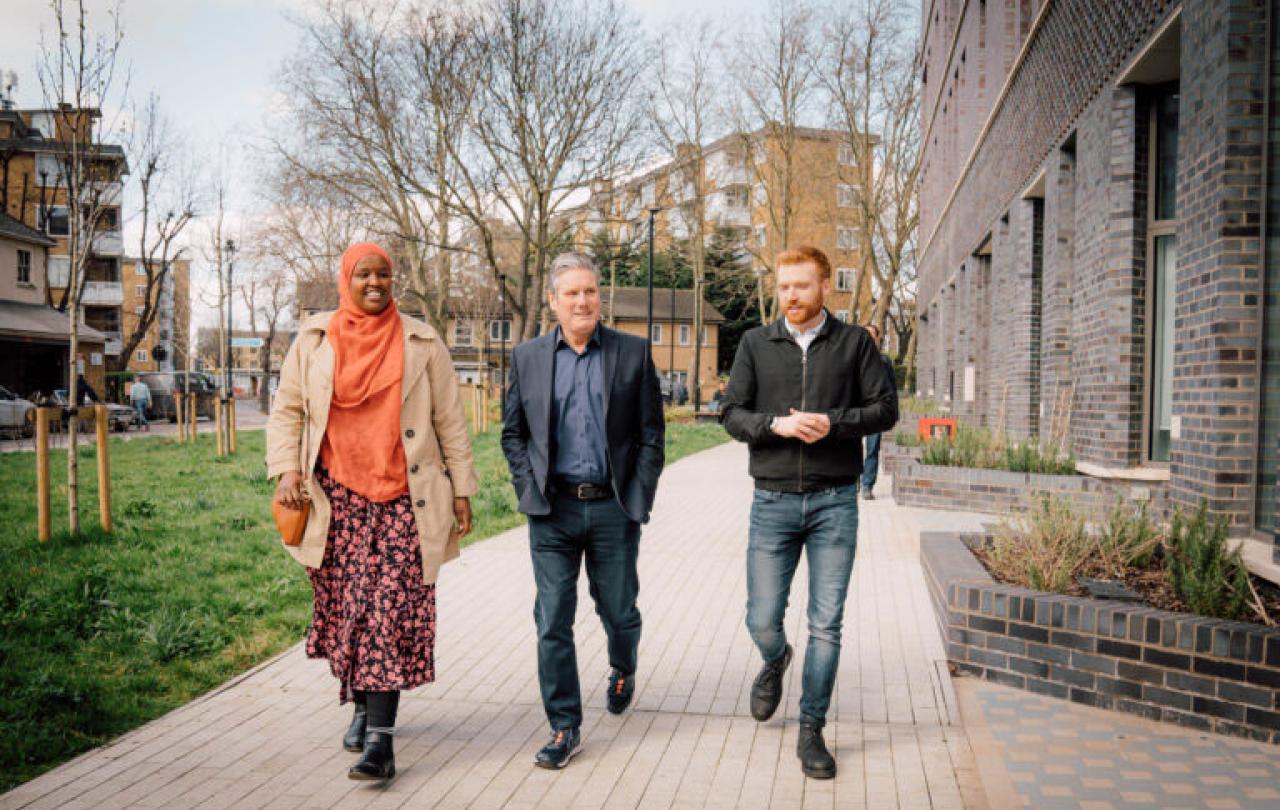
I’ve been watching the remarkable documentary series Once Upon a Time in Northern Ireland, and there is one story in it I can’t get out of my mind. Richard Moore was a ten-year old boy in Londonderry in the early seventies. Charles Inness was a 30-year old British soldier in the Royal Artillery stationed in the city at the time. During a local disturbance in 1972, Inness fired a rubber bullet to disperse a crowd of youths throwing stones at a RUC base at exactly the moment the ten-year old Richard crossed his line of fire. The bullet hit the young boy in the eye, blinding him for life.
Many years later, Moore expressed a desire to meet the man who fired the gun. And so, in 2006 they met. The British soldier, cautious, a little stiff and very proper, was initially defensive, refusing to apologise as he still felt he had acted rightly at the time and in the circumstances. Moore persisted, not out of a desire for vengeance or recrimination, but simply wanting to understand. Gradually the two became friends and Inness eventually found a way to say he was genuinely sorry.
The history of the troubles in Northern Ireland is full of stories of people being murdered simply because of one part of their identity - that they were Protestant or Catholic, UDA or IRA, British soldier or Irish Republican. What struck me listening to this story was Moore’s tenacity, to get beyond the simplistic identity of Inness as ‘the soldier who took away my sight’.
Summing up what he had learnt, Moore said: ‘Finding out who he was changes everything. To me, he’s no longer a soldier, he’s a human being. A father, a grandfather – it makes a person very real. And that’s a good thing.’ There seemed to me a gem of wisdom here that can get us past much of the polarisation of modern life.
“There are two striking human passions, the passion for uniqueness and the passion for union.”
‘Identity politics’ was a term borrowed from social psychology in the 1970s and quickly gained traction. It was an attempt to enable marginalised people to find solace and support with one another, by focussing on the common characteristics of one aspect of a person’s identity. It tried to help bring particularly disadvantaged groups together by describing the common experiences they had faced.
Since then it has gained a great deal of traction and generated much controversy. So why did it hit such a nerve?
The philosopher Tom Morris once wrote:
“There are two striking human passions, the passion for uniqueness and the passion for union. Each of us wants to be recognised as a unique member of the human race. We want to stand apart from the crowd in some way. We want our own dignity and value. But at the same time, we have a passion for union, for belonging, even for merging our identities into a greater unity in which we can have a place, a role, a value.”
Identity politics was a reflection of these two great human longings - our desire for uniqueness, and our need to belong. On the one hand we all want to be special, unique, different from everyone else. On the other hand, we want a tribe to belong to, whether defined by gender, race, sexuality, nationality or the like. And so, we choose an identity that defines us, marks us off to the world, and gives us a group to belong to.
Identity politics began with good intentions. Yet the way it is often used means that it encourages me to think that once I have labelled someone with a particular characteristic, that is all I need to know about them. If I know they are black or white, privileged or deprived, young or old, gay or straight, conservative or progressive, and so on, then I know all I need to know. I can then embrace them as one of my tribe, or dismiss them as different, without any further discernment.
One of the writers of the Psalms, reflecting on his own self-awareness, wrote “I am fearfully and wonderfully made.” The reality is that we are all immensely complex beings with multiple facets, different qualities and a number of overlapping identities. My neighbour may be Asian. And knowing that, I might think ‘I know what Asian people are like – and he must be like all the others.’ Yet he might also be a father, a husband, an Arsenal fan, of Bangladeshi heritage, a doctor, middle-aged, a Labour voter, suffering from occasional depression, a 2 handicap golfer. And so on. These are all part of who he is and if I want to get to know him fully, I need to understand something about all of these elements of his identity. If I fix on any one of these as the final truth about him, and ignore all the rest, I do him a disservice. To reduce the complexity and wonder of a fellow human being to one single characteristic is surely a mistake. It is to fail to do them justice, and display an unwillingness to take the time to understand them. It is, in the final analysis, a failure to love.
The final truth about each one of us can only be what is true of all of us - that we are ‘fearfully and wonderfully made’. In that same Psalm, the writer relates his sense that the God he worships, in a way that is both comforting yet unnerving, knows everything about him:
“you know when I sit and when I rise; you perceive my thoughts from afar, you discern my going out and my lying down; you are familiar with all my ways.”
We are each one known, loved, understood in our very complexity by the God who made us, and invited to become capable of that same kind love – the love that looks beyond the surface to understand the complexities of others – in other words, to grow into the likeness of God.
Richard Moore may have been blinded by that rubber bullet in 1972. Yet in a strange way he learnt to see better than most of us. He learnt to see past the simple identity of Charles Inness as ‘the British soldier who ruined my life.’ He had the tenacity to learn that that this man was, like all of us, both complex and simple - a man with unique relationships, a history, in his own way shaped by his experience, and yet at the same time, worth getting to know in that complexity - that ultimately he was, like all of us, ‘fearfully and wonderfully made.’





